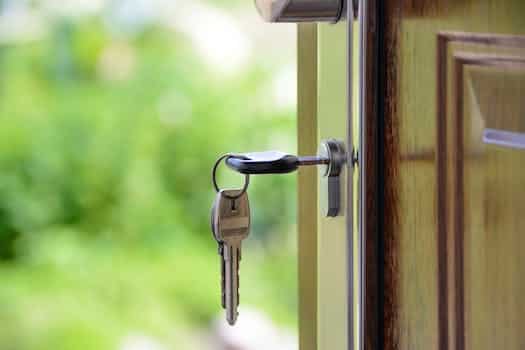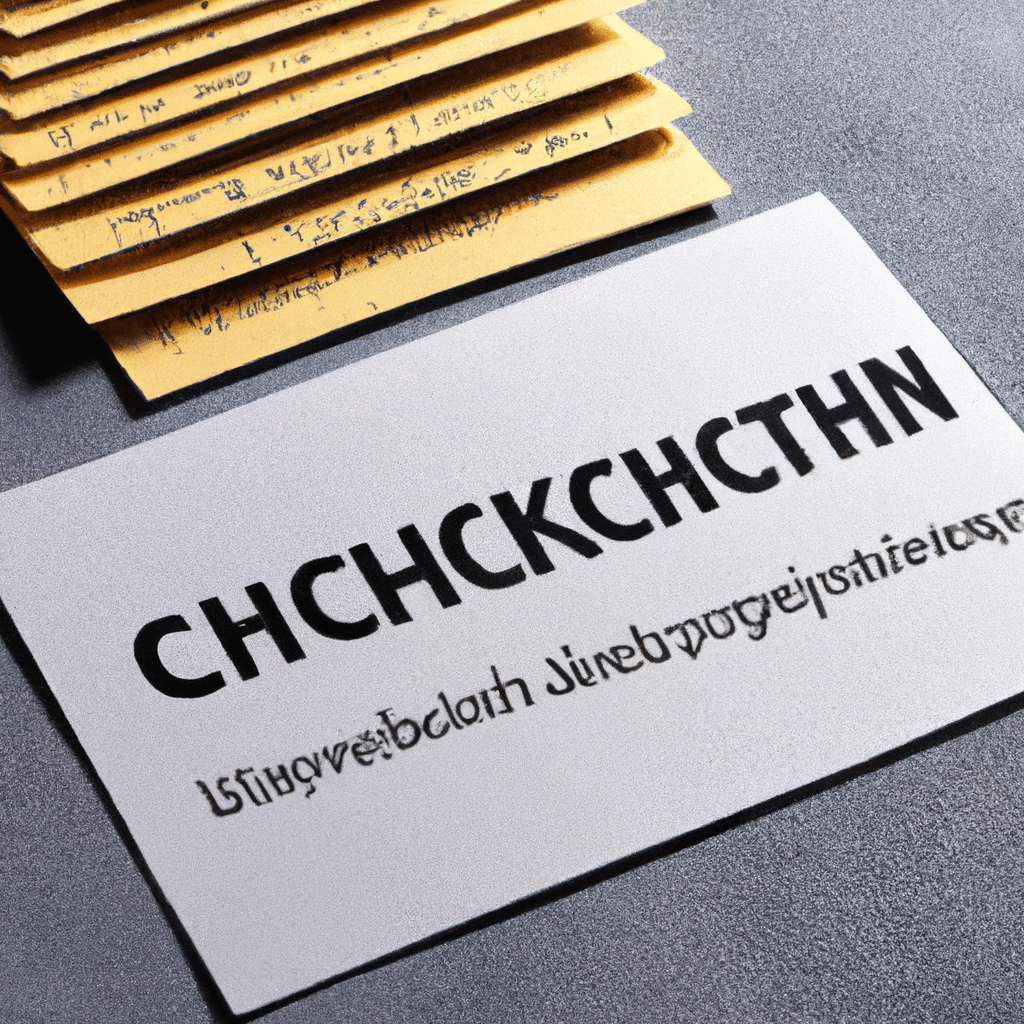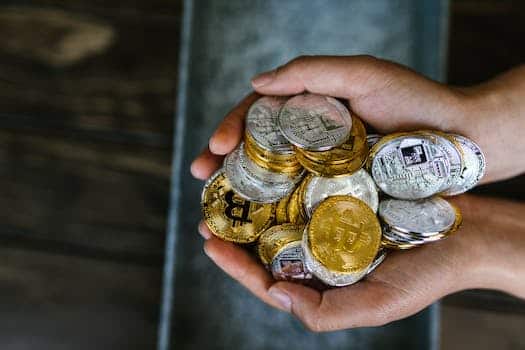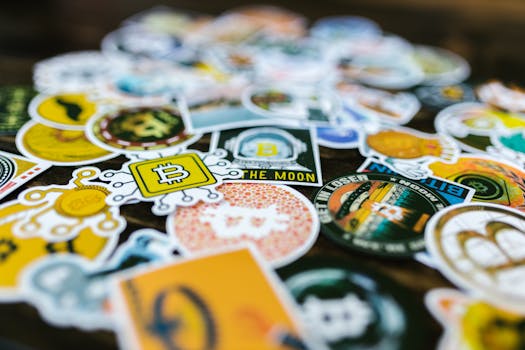As the popularity of blockchain technology grows, so does the importance of ensuring the security of digital assets. With the potential for great financial and personal value stored in blockchain networks, it is crucial to implement effective security measures. In this article, we will explore the top 10 blockchain security measures that can help protect your valuable digital assets from unauthorized access, fraud, and other threats. By understanding and implementing these measures, you can have peace of mind knowing that your digital assets are well-protected in the ever-evolving world of blockchain technology.
- 1. Introduction
- 1.1. Understanding the Importance of Blockchain Security
- 1.2. Common Security Threats in Blockchain
- 1.3. The Need for Robust Security Measures in Blockchain
- 2. Key Blockchain Security Measures
- 2.1. 1. Encryption
- 2.2. 2. Consensus Mechanisms
- 2.3. 3. Public and Private Key Infrastructure
- 2.4. 4. Multi-factor Authentication
- 2.5. 5. Regular Security Audits
- 3. Best Practices for Ensuring Blockchain Security
1. Introduction
Blockchain technology has revolutionized the way we store and transfer digital assets. With its decentralized and transparent nature, blockchain offers unparalleled security. However, it is important to take additional measures to protect your digital assets from potential threats. In this article, we will explore the top 10 blockchain security measures that can safeguard your valuable assets from unauthorized access, hacking, and other cyber threats.
1.1. Understanding the Importance of Blockchain Security
Blockchain security is of utmost importance in today’s digital landscape. As the use of blockchain technology continues to expand, so does the need to protect digital assets from potential threats. Blockchain security measures play a crucial role in safeguarding sensitive information and ensuring the integrity of transactions.
Introduction:
The rapid growth of blockchain technology has revolutionized various industries, including finance, healthcare, supply chain, and more. This distributed ledger technology offers unparalleled transparency, immutability, and decentralization. However, it also presents unique security challenges that need to be addressed.
With the increasing adoption of blockchain, hackers and malicious actors are constantly looking for vulnerabilities to exploit. Therefore, implementing robust security measures is essential to prevent unauthorized access, data breaches, and other cyber threats.
In this article, we will explore the top 10 blockchain security measures that can help protect your digital assets. By understanding the importance of blockchain security and adopting these measures, you can ensure the safety and integrity of your valuable assets in the digital world.
1.2. Common Security Threats in Blockchain
Blockchain technology has gained immense popularity in recent years due to its decentralized and secure nature. However, just like any other digital system, it is also prone to various security threats. These threats can compromise the integrity, confidentiality, and availability of the data stored on the blockchain. In this article, we will explore some common security threats that exist in the blockchain ecosystem and discuss the importance of implementing robust security measures to protect your digital assets.
1.3. The Need for Robust Security Measures in Blockchain
The Need for Robust Security Measures in Blockchain
In today’s digital age, where digital assets are becoming increasingly valuable, it is crucial to implement robust security measures in blockchain technology. Blockchain, the decentralized and transparent ledger system, has gained immense popularity due to its ability to securely store and transfer digital assets. However, this technology is not immune to security threats and vulnerabilities. As the value and usage of blockchain continue to grow, so does the need for robust security measures to protect digital assets from malicious attacks.
One of the primary reasons for implementing robust security measures in blockchain is to prevent unauthorized access and tampering. Unlike traditional centralized systems, blockchain operates on a distributed network of computers, making it much more difficult for hackers to manipulate the data. However, there have been instances of blockchain hacks and breaches, emphasizing the importance of implementing strong security protocols.
Another crucial aspect of blockchain security is the prevention of double-spending attacks. Double spending refers to the act of spending the same digital asset more than once. Blockchain uses consensus algorithms and cryptographic techniques to ensure that each transaction is legitimate and cannot be duplicated. By implementing robust security measures, such as encryption and digital signatures, blockchain can effectively prevent double-spending attacks.
Moreover, robust security measures in blockchain also protect against insider threats. Blockchain involves multiple participants, and it is essential to ensure that each participant follows the rules and acts honestly. However, there is always a risk of insider attacks, where a participant with malicious intent tries to manipulate the system from within. By implementing stringent access controls, auditing mechanisms, and smart contract security, blockchain can mitigate the risk of insider threats and maintain the integrity of digital assets.
In conclusion, the need for robust security measures in blockchain cannot be overstated. As the value and adoption of blockchain technology continue to rise, it becomes imperative to safeguard digital assets from potential security threats. By implementing encryption, consensus algorithms, access controls, and other security measures, blockchain can provide a secure environment for storing and transferring digital assets. Whether it is preventing unauthorized access, double-spending attacks, or insider threats, robust security measures are essential to maintain the trust and reliability of blockchain technology.
2. Key Blockchain Security Measures
Blockchain technology has revolutionized various industries by providing a secure and transparent way of recording and verifying transactions. However, as with any digital system, there are potential security risks that need to be addressed. To ensure the safety of your digital assets stored on the blockchain, it is crucial to implement key security measures. In this article, we will discuss the top 10 blockchain security measures that can help protect your valuable digital assets from unauthorized access or tampering. By following these measures, you can enhance the security of your blockchain network and have peace of mind knowing that your digital assets are well-protected.
2.1. 1. Encryption
Encryption is a crucial aspect of blockchain security. It involves the use of cryptographic algorithms to convert data into a coded form that can only be accessed by authorized parties. This process ensures that sensitive information remains confidential and secure within the blockchain network.
Implementing encryption techniques adds an extra layer of protection to digital assets stored on the blockchain. It prevents unauthorized access, tampering, and data breaches, making it extremely difficult for hackers to manipulate or steal valuable information.
One of the primary encryption methods used in blockchain security is asymmetric encryption. This involves the use of a public key and a private key. The public key is accessible to everyone in the network, allowing for secure communication and verification. The private key, on the other hand, is kept confidential and is used for decryption and digital signatures.
By utilizing encryption, blockchain technology ensures the integrity and confidentiality of data, making it an essential security measure for safeguarding digital assets.
2.2. 2. Consensus Mechanisms
Consensus mechanisms play a crucial role in ensuring the security and integrity of blockchain networks. These mechanisms are designed to establish a consensus or agreement among the network participants about the validity of transactions and the order in which they are added to the blockchain.
There are several consensus mechanisms employed in various blockchain systems, each with its own unique characteristics and security features. Let’s explore some of the key consensus mechanisms used in blockchain technology:
1. Proof of Work (PoW): This is the most well-known consensus mechanism used by blockchain networks such as Bitcoin. It requires network participants, known as miners, to solve complex mathematical puzzles to validate and add new blocks to the blockchain. PoW is highly secure but consumes a significant amount of computational power and energy.
2. Proof of Stake (PoS): In this consensus mechanism, the probability of validating a new block is determined by the stake or ownership of a participant in the network. The more cryptocurrency a participant holds, the higher the chances of being chosen to validate new blocks. PoS is energy-efficient compared to PoW but may lead to centralization if a few participants hold a majority of the cryptocurrency.
3. Delegated Proof of Stake (DPoS): DPoS is a variation of PoS where participants vote for a limited number of delegates who are responsible for validating transactions and adding new blocks. This mechanism aims to achieve faster transaction processing times and scalability while maintaining decentralization. However, it relies on the trustworthiness of the elected delegates.
4. Practical Byzantine Fault Tolerance (PBFT): PBFT is a consensus mechanism that focuses on achieving consensus in a network with known participants. It requires a two-thirds majority of participants to agree on the validity and order of transactions. PBFT offers high throughput and low latency but is less suitable for public blockchain networks with unknown participants.
These are just a few examples of consensus mechanisms used in blockchain systems. Each mechanism has its own trade-offs in terms of security, scalability, energy consumption, and decentralization. It is important for blockchain developers and users to understand these mechanisms and select the most appropriate one based on their specific requirements and goals.
2.3. 3. Public and Private Key Infrastructure
Public and Private Key Infrastructure:
One of the fundamental aspects of blockchain security is the utilization of public and private key infrastructure. This cryptographic system plays a crucial role in ensuring the authenticity, confidentiality, and integrity of digital assets stored on the blockchain.
Public and private keys are mathematically linked pairs of cryptographic keys. The public key is accessible to everyone and is used to encrypt data or transactions, while the private key is kept secret and used for decryption or signing of transactions.
The public key infrastructure (PKI) provides a framework for managing these keys and implementing secure communication over the blockchain network. It establishes trust by verifying the ownership of public keys and ensuring that only authorized individuals can access and modify the digital assets.
Through the use of PKI, blockchain users can securely interact with the network, digitally sign transactions, and validate the authenticity of received data. This infrastructure forms the foundation of blockchain security measures, protecting against unauthorized access, tampering, and fraud.
2.4. 4. Multi-factor Authentication
Multi-factor authentication (MFA) is one of the key blockchain security measures that can greatly enhance the protection of your digital assets. With MFA, users are required to provide multiple forms of identification in order to access their blockchain accounts or perform transactions. This adds an extra layer of security by combining something the user knows (like a password) with something they possess (like a mobile device or security token) or something inherent to them (like a fingerprint or facial recognition). By requiring more than just a password, MFA helps prevent unauthorized access or hacking attempts, as even if one factor is compromised, the attacker would still need to bypass the additional authentication methods. Implementing multi-factor authentication is highly recommended for anyone utilizing blockchain technology to ensure the utmost security of their digital assets.
2.5. 5. Regular Security Audits
Regular security audits are crucial for ensuring the safety and integrity of blockchain systems. These audits involve thorough examinations of the blockchain network to identify any potential vulnerabilities or weaknesses in the security measures. By conducting regular security audits, organizations can proactively address and mitigate any security risks, thereby protecting their digital assets from potential threats.
During a security audit, various aspects of the blockchain system are assessed, such as the encryption algorithms, smart contracts, consensus mechanisms, and access controls. The goal is to identify any vulnerabilities or loopholes that could potentially be exploited by malicious actors.
To ensure the effectiveness of security audits, it is important to engage the services of experienced and knowledgeable auditors who specialize in blockchain security. These professionals have a deep understanding of the unique challenges and risks associated with blockchain technology.
Regular security audits should be conducted at predetermined intervals, depending on the size and complexity of the blockchain system. Additionally, audits should also be performed after any major system updates or changes to ensure that the security measures remain robust and up to date.
By regularly conducting security audits, organizations can stay one step ahead of potential security breaches and protect their valuable digital assets effectively.
3. Best Practices for Ensuring Blockchain Security
Blockchain security is of utmost importance in today’s digital landscape. With the increasing popularity of blockchain technology, it is crucial to implement the best practices to protect your valuable digital assets. Here are the top 10 blockchain security measures that can help safeguard your digital assets:
1. Use Strong Cryptography: Implement robust cryptographic algorithms to secure data and transactions on the blockchain. This ensures that only authorized parties can access and modify the information.
2. Secure Private Keys: Protect your private keys, which are essential for accessing and managing your digital assets. Use secure storage solutions such as hardware wallets or encrypted offline storage.
3. Implement Multi-factor Authentication: Enable multi-factor authentication for accessing your blockchain accounts. This adds an extra layer of security by requiring additional verification steps, such as a unique code or biometric authentication.
4. Regularly Update Software: Keep your blockchain software up to date with the latest security patches and updates. This helps protect against known vulnerabilities and ensures that you are using the most secure version of the software.
5. Conduct Penetration Testing: Perform regular penetration testing to identify any potential vulnerabilities in your blockchain system. This allows you to proactively address security weaknesses and strengthen your overall security posture.
6. Monitor Network Activity: Monitor the network activity of your blockchain system to detect any suspicious or unauthorized access attempts. Implement intrusion detection systems and real-time monitoring tools to identify and respond to potential security threats.
7. Use Secure Network Connections: Ensure that your blockchain nodes and wallets are connected to secure networks. Avoid using public Wi-Fi networks or unsecured connections, as they can be vulnerable to eavesdropping and man-in-the-middle attacks.
8. Implement Access Controls: Set up proper access controls and permissions for your blockchain system. Only grant necessary privileges to authorized individuals or entities, and regularly review and update these access controls.
9. Backup and Recovery: Regularly backup your blockchain data and implement a robust recovery plan. This helps protect against data loss or system failures and ensures that you can restore your digital assets in case of any unforeseen events.
10. Educate Users: Provide training and education to users about blockchain security best practices. Raise awareness about the potential risks and teach them how to identify and avoid common security threats, such as phishing attacks or social engineering scams.
By following these best practices, you can significantly enhance the security of your blockchain system and protect your valuable digital assets from unauthorized access or theft.
3.1. 1. Implementing Strong Access Controls
Implementing strong access controls is crucial for ensuring blockchain security. Access controls help in preventing unauthorized access to the blockchain network and protecting digital assets. Here are some best practices to follow:
1. Use multi-factor authentication (MFA): Implementing MFA adds an extra layer of security by requiring users to provide multiple forms of identification, such as a password and a one-time code sent to their mobile device.
2. Role-based access control (RBAC): RBAC assigns specific roles and permissions to users based on their responsibilities and job functions. This ensures that only authorized individuals have access to sensitive information and actions.
3. Regularly review and update access privileges: It is essential to periodically review and update access privileges to ensure that only authorized individuals have the necessary permissions. This helps in preventing any potential security breaches due to outdated access controls.
4. Implement strong password policies: Enforce the use of strong passwords that include a combination of letters, numbers, and special characters. Additionally, encourage users to change their passwords regularly.
5. Limit access to the least privilege principle: Follow the principle of least privilege, which means granting users the minimum level of access required to perform their tasks. This minimizes the potential damage in case of a compromised account.
By implementing these strong access controls, you can significantly enhance the security of your blockchain network and protect your valuable digital assets.
3.2. 2. Regularly Updating Software and Patches
Regularly updating software and patches is one of the best practices for ensuring blockchain security. The blockchain technology is constantly evolving, and new vulnerabilities or bugs may be discovered over time. Therefore, it is crucial to keep the software and patches up to date to address any security issues and enhance the overall security of your digital assets.
By regularly updating the software, you can benefit from the latest security enhancements, bug fixes, and performance improvements provided by the developers. These updates often include patches for known vulnerabilities, making it essential to install them promptly.
Failing to update the software and patches can leave your blockchain network susceptible to attacks, as hackers can exploit the identified vulnerabilities. Additionally, outdated software may lack the necessary security measures to withstand emerging threats.
To ensure a smooth update process, it is recommended to follow a comprehensive plan that includes testing the updates in a controlled environment before deploying them in a production environment. This testing phase helps identify any compatibility issues or conflicts that may arise with other components of the blockchain system.
In conclusion, regular software updates and patches play a vital role in maintaining the security of your blockchain network. By staying proactive and keeping up with the latest developments, you can minimize the risk of unauthorized access, data breaches, and other potential security threats.
3.3. 3. Conducting Penetration Testing
Penetration testing is a crucial practice when it comes to ensuring the security of a blockchain system. By conducting penetration testing, businesses can identify vulnerabilities and weaknesses in their blockchain infrastructure and take necessary measures to address them. This proactive approach helps in preventing potential security breaches and unauthorized access to digital assets.
To conduct penetration testing for blockchain security, it is important to follow certain best practices. These practices include:
1. Define clear objectives: Before starting the penetration testing process, it is essential to define clear objectives and goals. This helps in focusing the testing efforts on specific areas of concern and ensures a targeted approach.
2. Engage experienced professionals: Penetration testing requires expertise in blockchain technology and security protocols. It is advisable to engage experienced professionals or third-party security firms who specialize in blockchain security testing. Their knowledge and skills can help uncover hidden vulnerabilities and provide valuable insights.
3. Test different attack vectors: Blockchain systems can be attacked through various vectors, including network attacks, software vulnerabilities, and social engineering techniques. It is important to test for different attack vectors to assess the overall security posture of the blockchain infrastructure.
4. Use realistic test scenarios: Penetration testing should simulate real-world scenarios to accurately assess the system’s resilience against potential attacks. This involves creating test environments that closely resemble the production environment and utilizing tools and techniques employed by malicious actors.
5. Regularly update and patch systems: Blockchain technology is constantly evolving, and new vulnerabilities can emerge over time. It is crucial to regularly update and patch the blockchain system to address known vulnerabilities and ensure the latest security patches are applied.
6. Document and analyze findings: Throughout the penetration testing process, it is important to document all findings and analyze them thoroughly. This helps in understanding the root causes of vulnerabilities and enables businesses to implement effective remediation measures.
By following these best practices, businesses can enhance the security of their blockchain infrastructure and protect their valuable digital assets from potential threats and attacks.
3.4. 4. Educating Users about Security Practices
In order to effectively protect your digital assets in the blockchain, it is crucial to educate yourself and your users about the best security practices. By following these practices, you can minimize the risks of hacking, fraud, and unauthorized access. Here are some important guidelines to consider:
1. Strong Passwords: Encourage users to create strong and unique passwords for their blockchain accounts. A strong password consists of a combination of letters, numbers, and special characters.
2. Two-Factor Authentication (2FA): Enable 2FA for all blockchain accounts. This adds an extra layer of security by requiring users to provide an additional verification code or token.
3. Regular Software Updates: Keep all blockchain software and applications up to date. Software updates often include important security patches that fix vulnerabilities.
4. Secure Wallets: Choose a reliable and secure wallet for storing your digital assets. Look for wallets that offer strong encryption and multiple layers of security.
5. Backup and Recovery: Regularly backup your digital assets and keep the backup in a secure location. This ensures that you can recover your assets in case of loss or theft.
6. Be Cautious of Phishing Attacks: Educate users about the risks of phishing attacks and how to identify and avoid them. Remind them to never click on suspicious links or provide sensitive information to unknown sources.
7. Use Reputable Exchanges: When trading or exchanging digital assets, use reputable and trusted exchanges. Research and choose exchanges that have a strong security track record.
8. Public and Private Key Management: Understand the importance of managing your public and private keys securely. Keep your private keys offline and never share them with anyone.
9. Regularly Monitor Account Activity: Keep a close eye on your blockchain account activity. Regularly review transactions and monitor for any suspicious or unauthorized activity.
10. Stay Informed: Stay updated with the latest news and developments in blockchain security. Subscribe to reputable sources and follow industry experts to stay informed about emerging threats and best practices.
By implementing these best practices and educating your users about them, you can enhance the security of your blockchain and protect your valuable digital assets.
3.5. 5. Implementing Backup and Recovery Procedures
Implementing backup and recovery procedures is crucial for ensuring blockchain security. In the event of a security breach, data loss, or system failure, having a reliable backup and recovery plan can help minimize the impact and restore the blockchain ecosystem quickly.
Here are some best practices to consider when implementing backup and recovery procedures for blockchain security:
1. Regularly backup blockchain data: It is important to create regular backups of the blockchain data to ensure that any lost or corrupted data can be recovered. This can be done by taking periodic snapshots of the blockchain and storing them securely.
2. Utilize off-site backup storage: Storing backup data off-site helps to protect against physical damage or theft. By keeping backups in a separate location, you can ensure that even if the primary system is compromised, the backup data remains intact.
3. Implement encryption for backup files: Encrypting backup files adds an extra layer of security to protect sensitive blockchain data. By encrypting the backups, unauthorized access to the data can be prevented, ensuring that only authorized personnel can access and restore the data.
4. Test backup and recovery procedures: Regularly testing the backup and recovery procedures is essential to ensure their effectiveness. By simulating various scenarios like data loss or system failure, you can identify any flaws in the procedures and make necessary improvements.
5. Maintain multiple backup copies: It is recommended to maintain multiple copies of the backups to enhance redundancy. Having multiple backup copies distributed across different storage mediums or locations can provide an additional layer of protection against data loss.
By following these best practices for implementing backup and recovery procedures, you can significantly enhance the security of your blockchain ecosystem and protect your valuable digital assets.
Conclusion
In conclusion, implementing top-notch security measures is crucial to safeguard your digital assets in the blockchain. By following these 10 key security practices, you can enhance the protection of your valuable cryptocurrencies and ensure a safe and trustworthy environment for your transactions.





